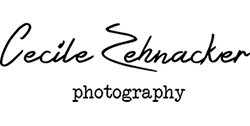Photography, as a form of artistic expression, reaches beyond simple imagery; it encapsulates emotions, narratives, and fleeting moments captured in time. But what truly defines the merit of a photograph? Is it technical perfection, subject matter, or perhaps something more intangible?
A standout photograph surpasses mere visual appeal; it’s a narrative waiting to unfold. While technical elements like lighting, composition, and focus are undoubtedly crucial, the essence of a remarkable photograph often resides in its capacity to evoke emotions and weave a compelling story.
Composition serves as a fundamental aspect of a captivating photo. Techniques like the rule of thirds, leading lines, symmetry, and framing guide the viewer’s gaze, bestowing balance upon an image. Yet, even a technically flawless photo can falter without a captivating subject or story. The subject—be it a person, landscape, or abstract element—ought to command attention, evoke emotions, or convey an idea.
Lighting, arguable photography’s most critical facet, can elevate an ordinary scene into a captivating tableau. The interplay of light and shadow adds depth, drama, and mood to an image. A well-lit photo not only illuminates the subject but also creates an atmosphere that resonates with the viewer.
Timing proves pivotal in photography. Seizing the decisive moment, as Henri Cartier-Bresson termed it, involves capturing that split second when all elements align perfectly—the expression, movement, and components within the frame. It’s about freezing a moment that narrates a story, incites curiosity, or stirs emotions.
While technical expertise holds significance, creativity and vision set exceptional photographs apart. The ability to uncover beauty in the mundane, to capture the extraordinary within the ordinary, distinguishes remarkable photographers. An unconventional perspective, unique angle, or innovative use of techniques can breathe life into an image.
Additionally, post-processing, a topic often debated in photography, can elevate a good photo to greatness. Editing tools enable photographers to refine their vision, enhance colors, adjust contrasts, or even manipulate reality while preserving the essence of the captured moment. Nevertheless, the balance between enhancing and distorting reality remains subjective and hinges on the photographer’s intent.
Yet, defining a ‘good’ photograph remains subjective. What resonates with one individual may not evoke identical emotions in another. Personal inclinations, cultural influences, and individual experiences shape perceptions of beauty and significance in photography.
Ultimately, a good photograph harmoniously melds technical finesse, creative vision, and emotional resonance. It’s a fusion of storytelling, visual aesthetics, and the capacity to elicit a response. Each photograph is a work of art, inviting viewers to interpret, connect, and appreciate the world through the photographer’s perspective.
The merit of a good photograph transcends technical mastery; it lies in its ability to transcend the visual and establish a connection with its audience, leaving an enduring impact on the soul.
